
2025 Tata Tiago Vs Hyundai Grand i10 Nios: The Clash Of Updated...
- Jan 10, 2025
- Views : 1497

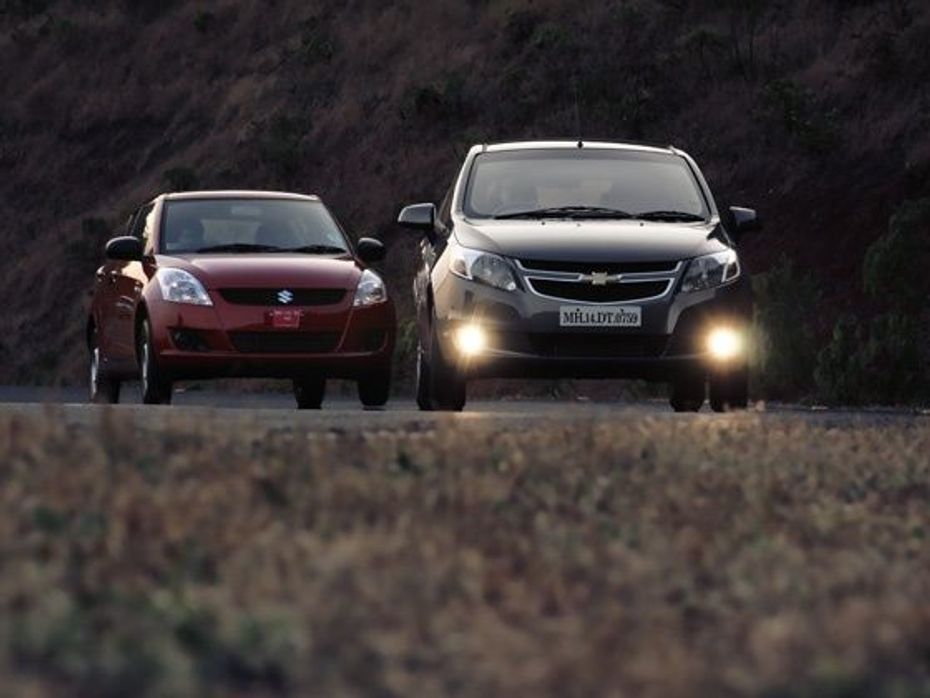
The competition in the premium hatchback segment in India is as intense as it could ever get. With a bunch of cars out there, each one with its USP, it is getting even more difficult for potential buyers to narrow down on a car from the never ending list. But there has been one car that has ruled the segment over the past seven years and it continues to do so with ease – the Maruti Suzuki Swift. Many cars have entered the market with the intention of dethroning the long standing leader of the class. Some came close, others didn’t, but none was able to even make a dent let alone steal the crown. Will General Motors’ newest offering, the Chevrolet Sail U-VA succeed in this mission impossible is the logical question that came to our minds when this predominantly Chinese-designed and developed machine hit the roads.

General Motors’ journey in India has been quite a rollercoaster ride, right from the early 90s when the American auto maker had a joint venture with Hindustan Motors to produce and sell Opels. Although the Chevrolet Optra sedan, Tavera MUV, and the small city car Beat were able to bring GM on the map in India, the Aveo U-VA was not really successful in attaining substantial results in the fast growing premium hatchback segment. While the Aveo U-VA was quite level headed, it lacked that certain oomph that cars like the Maruti Suzuki Swift and Hyundai Getz had in abundance.
Six years later with the world and its granny having evolved mightily, GM has played it smart but safe. First it ensured its survival with a tie-up and also an equity holding in GMIL with none other than SAIC (Shanghai Automotive Industry Corporation) whereby many products developed for the massive low end segment of the Chinese market were re-engineered to accept diesel and readied for India. The first of these is the Sail U-VA and while being easy on the eye, it is awhat is underneath its skin and make-up which will enable it to be taken seriously, before it comes to do battle with the segment leader.
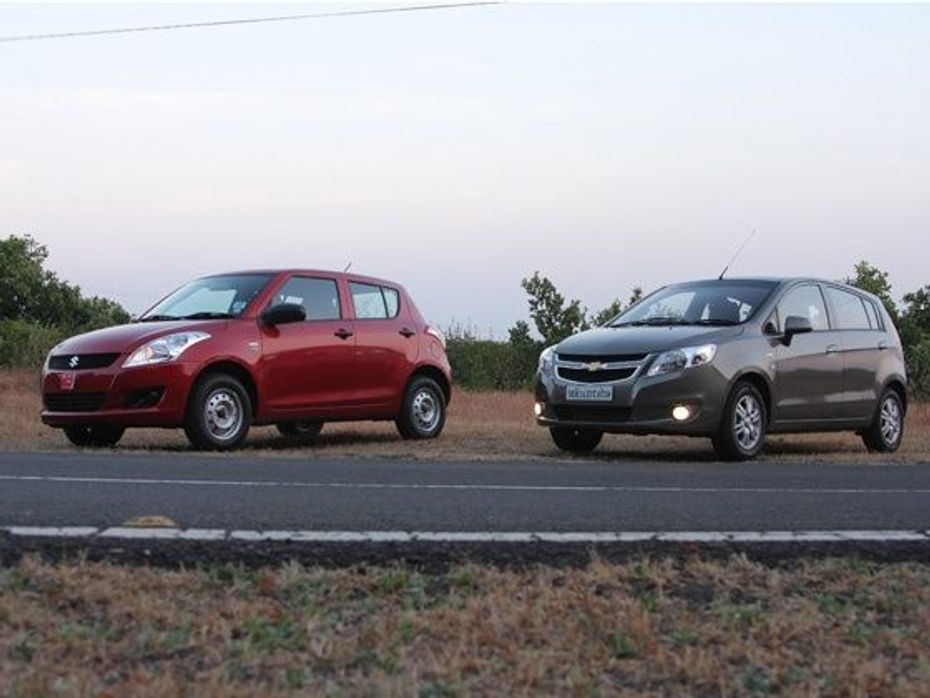
IT’S ALL ABOUT THE LOOK
Design is a major factor that influences buying decision of consumers, and that's the reason manufacturers spend loads of money in emphasizing a particular line of thought or design language. To elaborate, design is similar to fashion, as it tends to get dated with time. Having said that, MSIL has proven us wrong by showing how, with a few tweaks the Swift design has remained fresh over time. So, what’s new in the all-new Swift? The silhouette is the same, retaining all the signature traits, but there is also an improvement in elements that make the car look even more appealing than before. A longer bonnet gives it an aggressive poise while the bulging dual-coloured tail lamps make the rear look wider and add a lot of character to the profile. In a nutshell, changes in all the right places ensure that the new Swift’s design doesn’t feel passé. And taking the devil out of the details and putting god in there has kept the Swift ahead of the pack and firmly in the consumers’ minds.
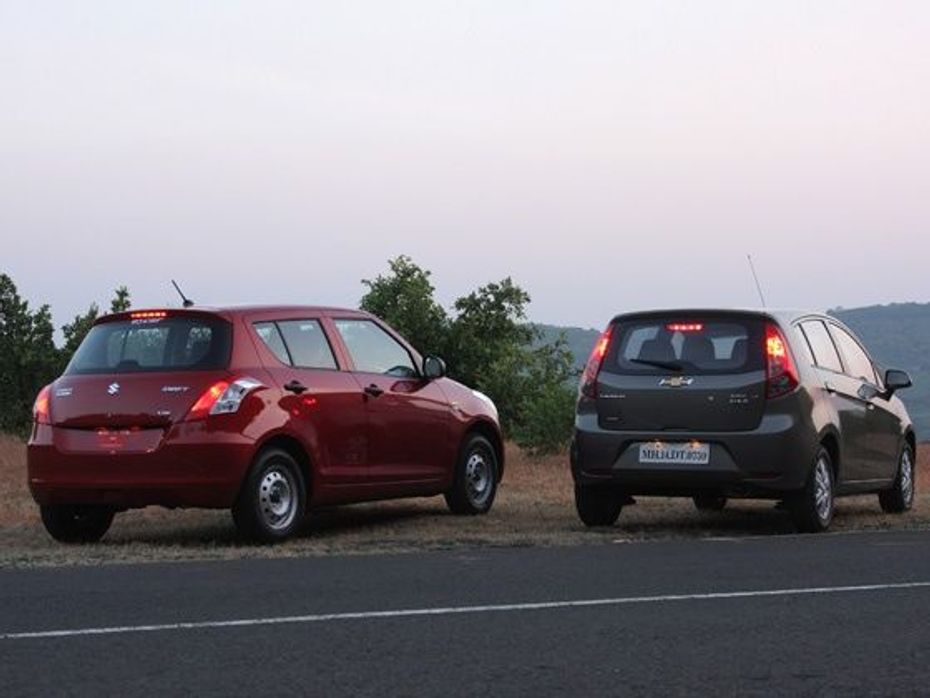
The Chevrolet Sail U-VA sports the brand’s relatively new design language seen on the Beat and the Cruze. The wide twin slatted front grille gives it an extremely aggressive aura and is highlighted by the sloping hood that merges into the grille adorned by the golden bow tie logo. The lateral headlights that flank the grille make the front end look balanced. The sharp shoulder line and the bulging wheel arches along with the 12-spoke alloy wheels enhance the car's appeal. A swooping line from the bonnet to the roofline and then to the rear adds distinction. The rear however fails to keep up with the front. Although the vertical tail lamps do attempt to spice up the otherwise dreary looking rear-end of the car, they’re not something that end up dominating the tailgate design, which is definitely a good thing. Styling, of course, is a subjective matter and what appeals to one buyer might not appeal to the next. But that being said, it would also be safe to state that the Swift is definitely the better looking car of the two, and sports a design that should be more universally palatable.
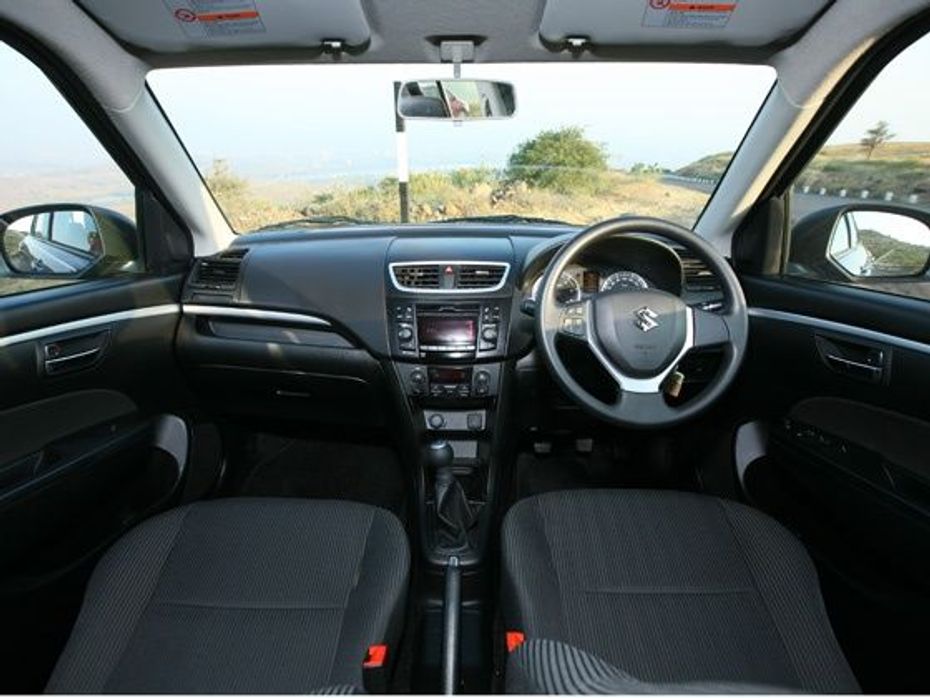
INSIDE OUT
Moving to the inside, the Swift has a much more intriguing story than the rather dreary Sail interiors. The Swift’s black dashboard with silver highlights around the centre A/C vents, steering wheel and above the glove box, gives the interior an upmarket feel. The centre console consisting of the music player with the large LCD and the air-con controls is a huge jump in terms of quality from the previous generation and far more appealing than the old school Chevy console. Behind the chunky steering wheel the orange backlit console with the digital odo and trip meter are funky.
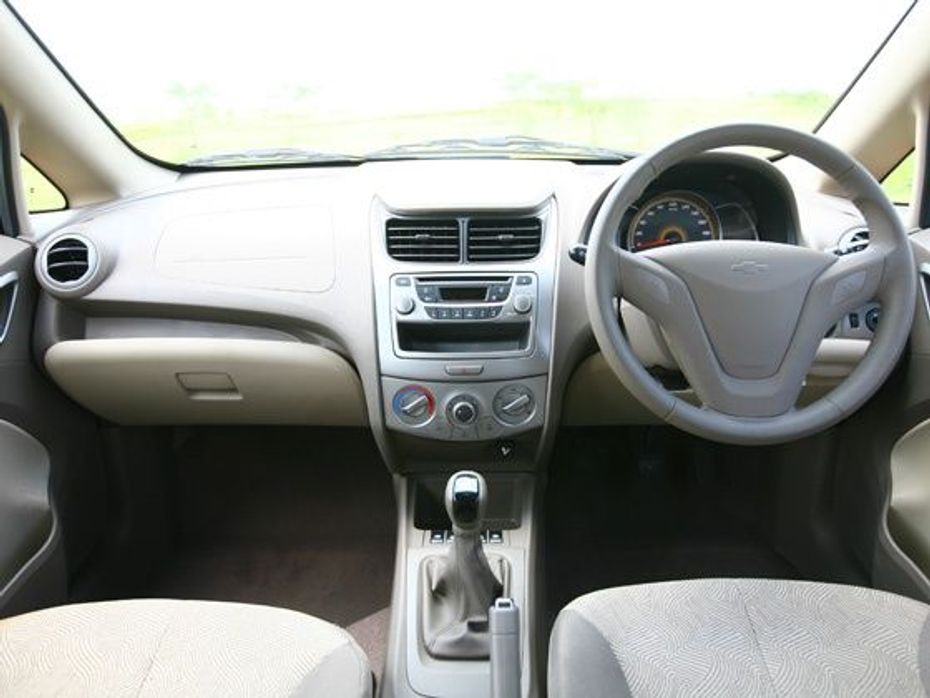
The Sail’s cabin definitely feels much more airy, thanks to the light tone which dominates the interior. However, the overall feel of the cabin is rather disappointing. Albeit dual-tone like the Swift, the grey dash further washes out the visual pleasure thanks to being married with the glove box and the door panels sporting light beige. The substandard plastic dash, buttons of the music system and the air-con controls give away the Chinese origins of the car and these needed to be the very things to have been up there in feel, texture and build. The centre console with the music player and air-con controls seems old school. The steering wheel is nice to hold, but the absence of steering mounted controls even in the top end variant is a letdown. The instrument console with the large speedo, digital tacho and telltale lights provides all the necessary information, but is not all that great to look at. Being fundamental is one thing, and not bring ergonomically sound is another. Next to the gear lever on the Sail you find an assortment of the power window controls which makes it way out of reach for the driver as opposed to the controls on the Swift which are easily reachable on the driver’s side door arm rest. While both the cars have their plus points with respect to the interiors, the Swift surely scores over the basic to the bone Sail.
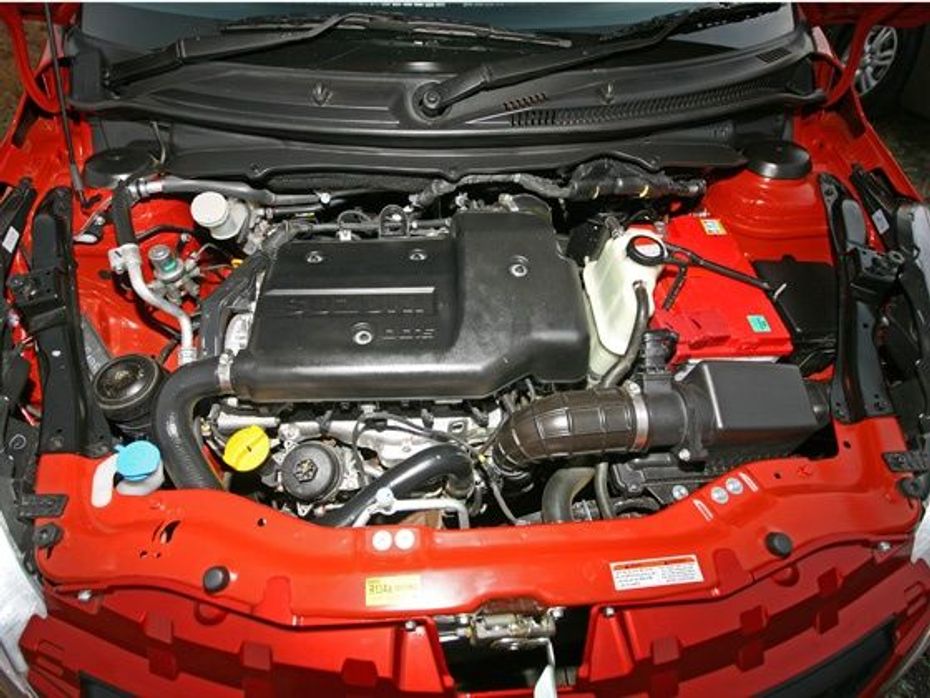
HEART OF THE MATTER
Like a lot of diesel cars, the Swift and the Sail sport the 1.3-litre Multijet engine sourced from Fiat, but the former sings a different tune altogether. Although the vertical tail lamps do attempt to spice up the otherwise dreary looking rear-end of the car, they’re not something that end up dominating the tailgate design, which is definitely a good thing. Styling, of course, is a subjective matter and what appeals to one buyer might not appeal to the next. But that being said, it would also be safe to state that the Swift is definitely the better looking car of the two, and sports a design that should be more universally palatable. The superiority of the DDiS engine is all evident, being extremely well refined and unstressed thanks to the oodles of available torque. The Chevrolet Smartech engine (as the Multijet is designated in GM speak) not only feels rough but is also poor in terms of NVH suppression. The Swift engine produces 75PS @ 4,000rpm and 190Nm of torque at 2,000rpm while the Sail's produces 78PS @ 4,000rpm and 205Nm of torque at a comparatively lower 1,750rpm. The Sail touches the 100km/h mark in 15.93 seconds, while the Swift took a little longer at 16.34 seconds. It is clear that the extra power and torque helps the Sail go quicker despite weighing 44kg more than the Swift. In in-gear acceleration test, the Sail did the 40-120km/h run in 23.64 seconds in fourth gear, while the Swift took 24.80 seconds for the same. Besides acceleration, the Sail outdoes the Swift in terms of braking. While the Chevy took 42.11 metres to come to standstill from 100km/h, the Swift took 45.74 metres.
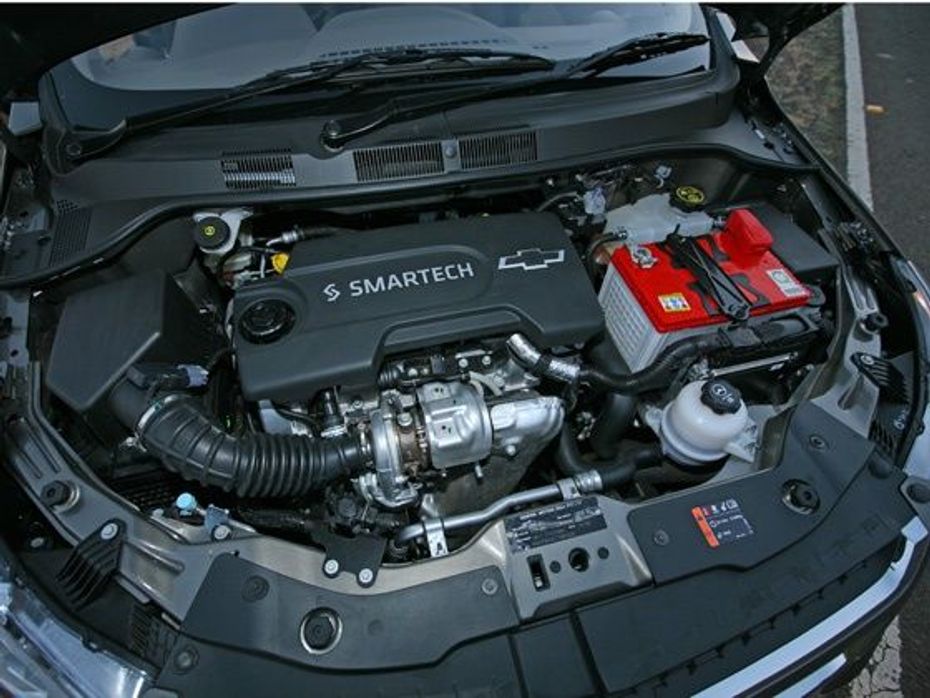
The power produced by the Swift engine is evenly distributed across its rev range. Therefore there is grunt available for enthusiastic driving as soon as you hit the throttle pedal. The Sail's brilliant throttle response, is clouded by turbo lag however. The Swift's smooth five-speed gearbox makes quick shifting a piece of cake while the notchy Sail gearbox is a drag in bumper-to-bumper city traffic. That said, the Sail edges ahead in terms of overall performance, statistics wise but it's the Swift that wins the contest in terms of overall feel and more smiles-per-mile!
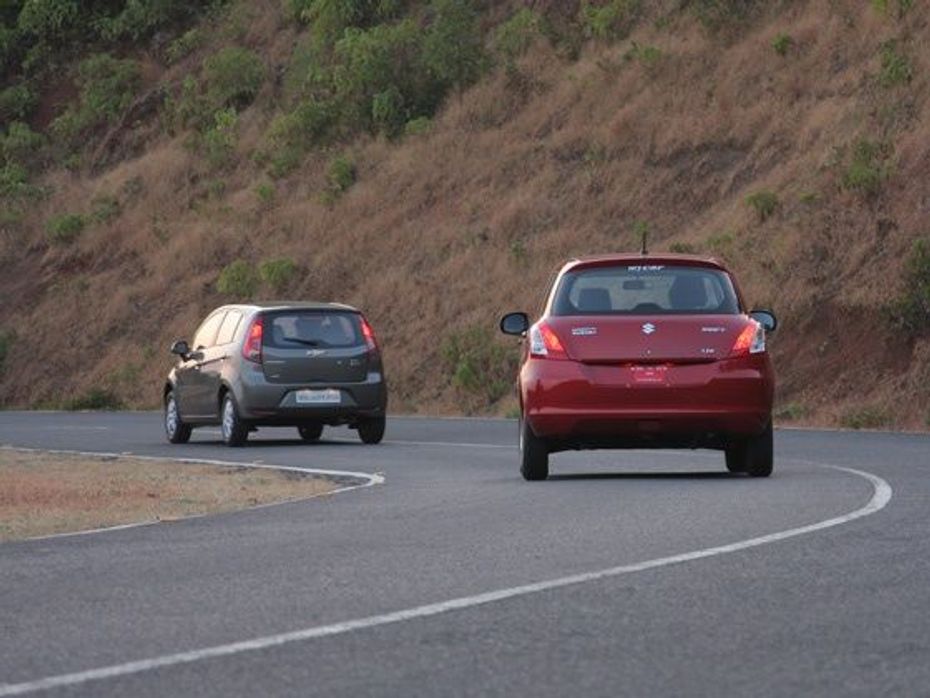
CORNERING COMPETENCE
The Swift is renowned for its well configured and sorted suspension which makes it fun to drive. The suspension has been tuned for a good balance between top notch handling and comfortable ride, the latter being crucial for Indian conditions. Hard cornering therefore does not upset the Swift, thanks also to the 185/65 R15 tyres and incredibly precise steering. On the flip side, the ride quality with the slightly stiffer layout can be bothersome on rough surfaces. The Sail with its relatively softer suspension and light steering is remains composed on rough stretches and provides a very comfortable ride to all its occupants, but does not inspire much confidence while going around corners. Having said that, there is no lack of grip from the narrower profile 175/70R14 tyres. The Sail's target audience is mature family-oriented buyers who will appreciate the comfortable ride that it offers.
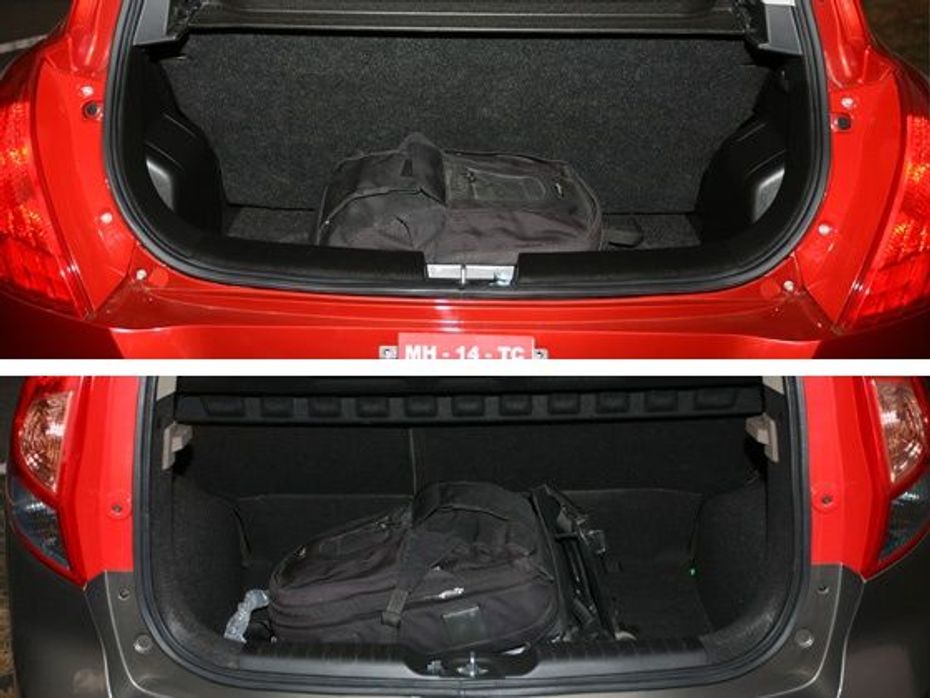
SPACE JAM
From the outside, the Swift and Sail look to be almost the same size. But the Sail is longer of and this is most evident on the rear bench. There is no skimping on under thigh support to increase leg and knee room with the Sail, which wins the space and comfort battle. Despite its 1695mm width, the Swift is cramped for shoulder room at the back owing to the thicker door design, while the 1690mm wide Sail is far more comfortable and spacious. The Sail boasts a 248-litre boot which can easily accommodate enough luggage for a weekend trip with family and if you are of the kind who like to carry your world with you, the rear seats folds flat with the rear bench able to slide further downwards to free up even more space in the cabin. The Swift on the other hand really falls short in the luggage carrying department thanks to its paltry 204-litre boot. In fact, even though the Swift too has foldable seats, unlike its rival, they cannot be folded fully flat. In the end, if it's space you are looking for, the Sail is a better bet.
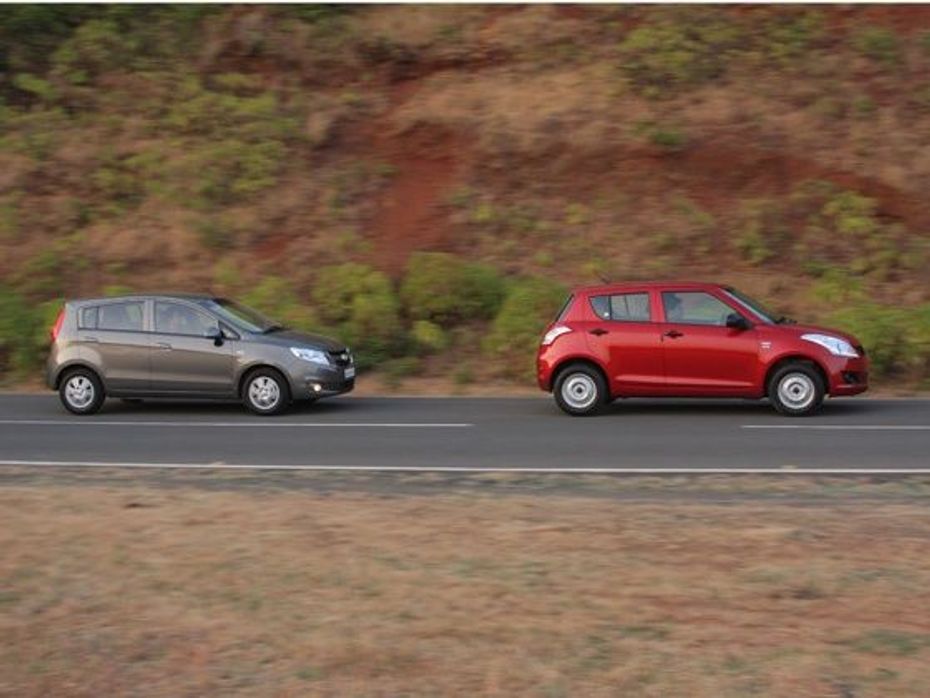
FOR THE ‘AVERAGE’ JOE
When it comes to efficiency, Maruti Suzuki has always been one of the most trusted automotive brands out there, and the Swift does more than justice to this line of thought. While both cars are powered by the same Fiat sourced 1.3-litre Multijet engine, the Swift's has a more driveable state of tune which allows it greater efficiency. The DDiS iteration in the Swift is tuned to return greater efficiency than its GM rival. On the roads in and around Pune, the Swift returned 14.5kmpl in the city and a brilliant 19.5kmpl on the highway, for an overall fuel mileage of 15.75kmpl. Meanwhile, in the same set of road and traffic conditions, the Sail clocked 13kmpl in the city and 17kmpl on the highway.
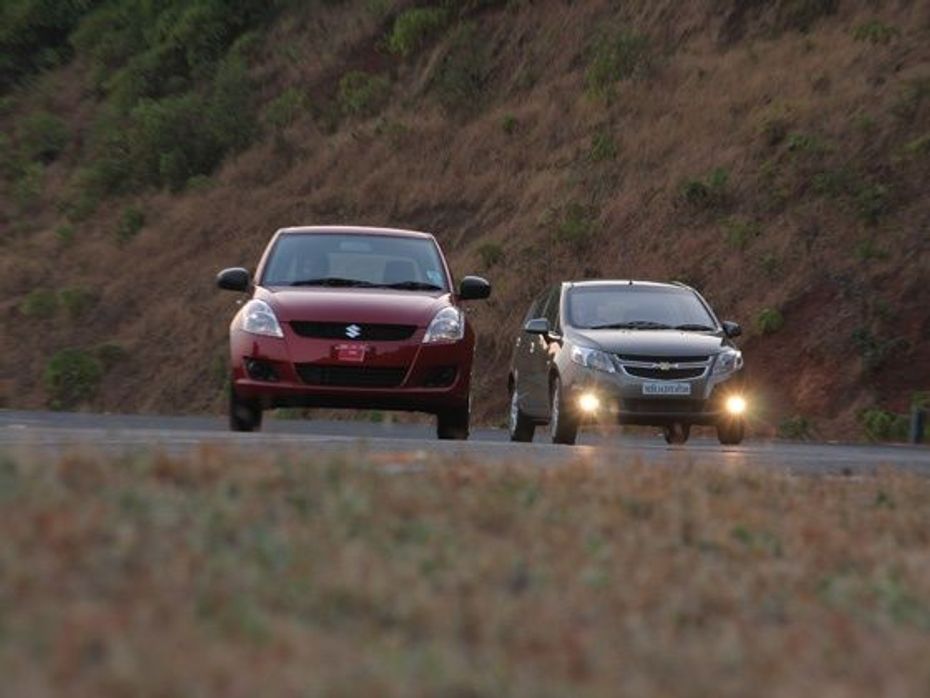
VERDICT
Beyond the looks, performance, handling and other parameters, there is the curcial one regarding price. The top end variants of both cars are similarly priced, the Swift costing Rs 6.80 lakh (ex-showroom Delhi), which is just Rs 18,000 more than its Chinese-American rival which is priced at Rs 6.62 lakh (ex-showroom Delhi). The Sail U-VA is no doubt a very good offering from GM and an even better replacement for the outgoing Aveo U-VA, with its space, good ride quality, and performance. But it falls behind the Suzuki Swift in several aspects. There is a big difference in equipment levels, such as the lack of steering mounted controls and climate control in the top-of-the-line Sail not to mention the Swift's better build quality and efficiency. While GM has made all the right moves by bringing in a car that has made its mark internationally, it could have priced it more competitively, about Rs 50,000-Rs 60,000 cheaper than it is, which could make a difference in a price sensitive market like India. Ergo, the Swift makes far better sense, offering for an extra Rs 18,000 a number of options and the peace of mind that goes with owning a well sorted, proven and reliable product.

2025 Tata Tiago Vs Hyundai Grand i10 Nios: The Clash Of Updated...

New Kia Syros Takes On The Kia Carens: Features, Specifications, And...

Kia Syros vs Hyundai Exter: Two Distinctly Sized Korean SUVs Compared...

Is The Kia Syros More Compelling Than The Best-selling Hyundai Creta?

Kia Syros vs Maruti Brezza: Most Premium Sub-4m SUV Compared With The...

Kia Syros Vs Hyundai Venue: Korean Subcompact SUVs Compared

Kia Syros Vs Skoda Kylaq: Comparison Between The Two Latest Sub-4m...

Kia Syros vs Kia Seltos: Can The New Kia Subcompact SUV Outshine Its...

Kia Syros vs Sonet: A Detailed Comparison Of The Two Sub-4m SUVs

Mahindra Thar Roxx, Scorpio N, Thar Go Off-Roading! The OG Proves Its...
India's largest automotive community
 MG Astor First Drive Review: Standing Out In Style
MG Astor First Drive Review: Standing Out In Style
 2021 Mahindra XUV700: First Drive Review
2021 Mahindra XUV700: First Drive Review
 Kia Sonet Driven: More Than Just A Great Brochure?
Kia Sonet Driven: More Than Just A Great Brochure?
 Kia Syros
Rs. 8.99 Lakh
Kia Syros
Rs. 8.99 Lakh
 Vayve Mobility Eva
Rs. 3.25 Lakh
Vayve Mobility Eva
Rs. 3.25 Lakh
 BMW X3
Rs. 75.80 Lakh
BMW X3
Rs. 75.80 Lakh
 Hyundai Creta Electric
Rs. 17.99 Lakh
Hyundai Creta Electric
Rs. 17.99 Lakh
 Lotus Emira
Rs. 3.22 Crore
Lotus Emira
Rs. 3.22 Crore